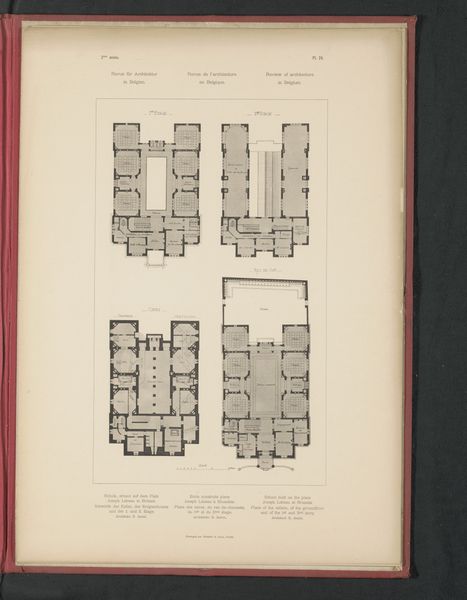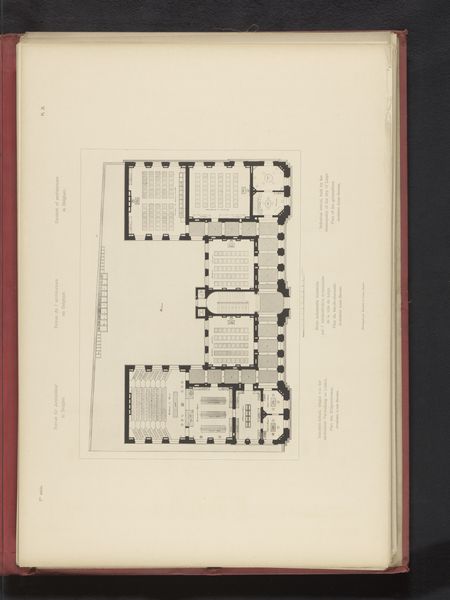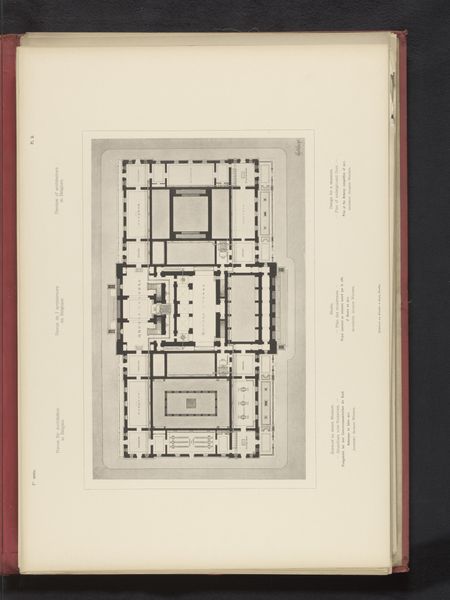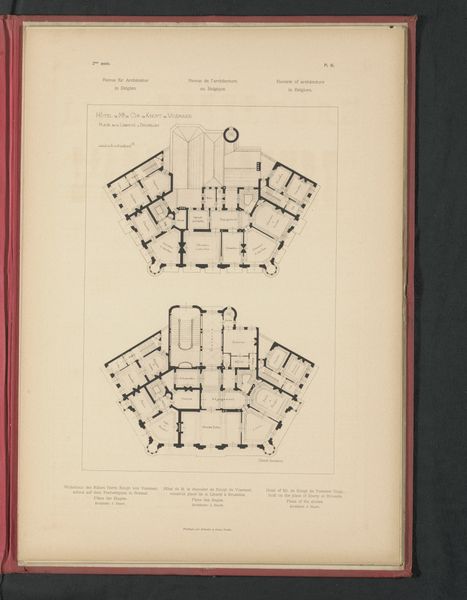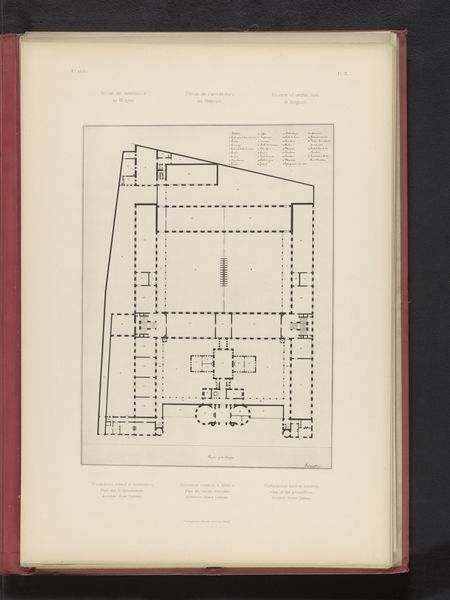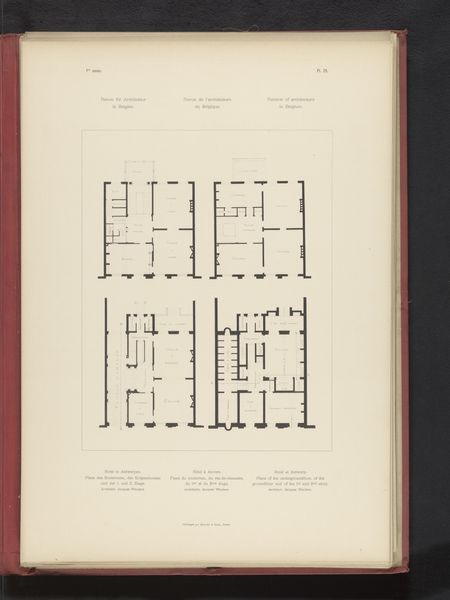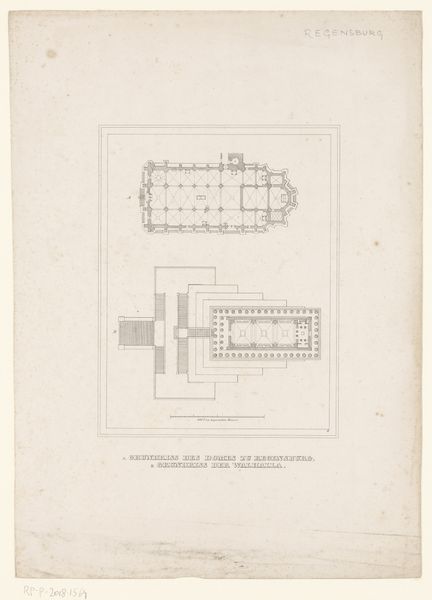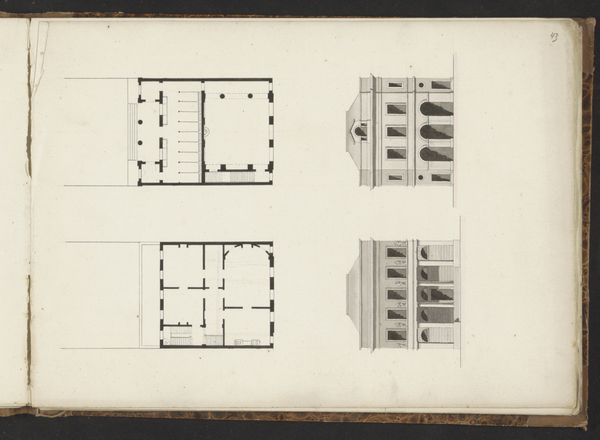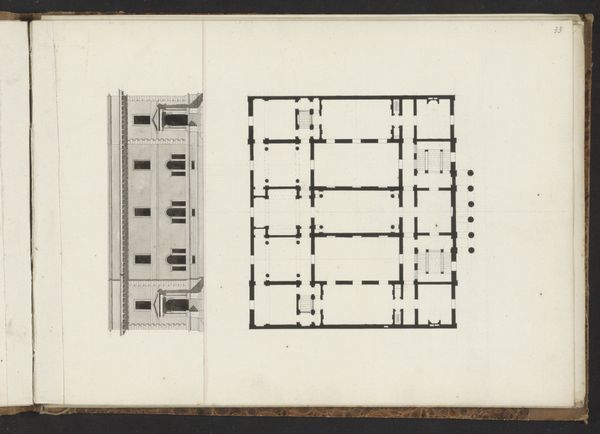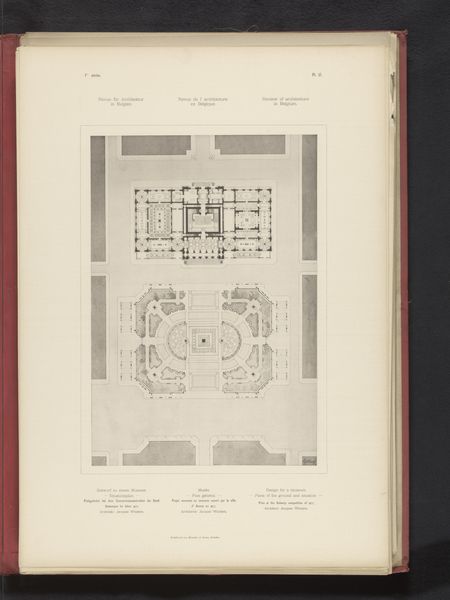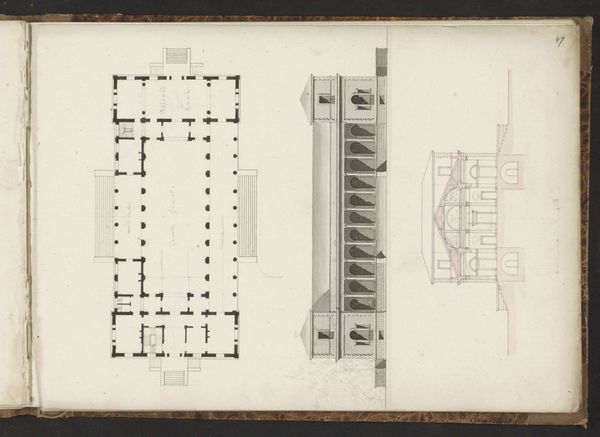
Vier reproducties van plattegronden van verdiepingen van een stadhuis voor Gilly, België, door Jean-Jacques Winders before 1893
0:00
0:00
drawing, print, paper, architecture
#
drawing
# print
#
paper
#
geometric
#
academic-art
#
architecture
Dimensions: height 354 mm, width 501 mm
Copyright: Rijks Museum: Open Domain
Editor: Here we have “Vier reproducties van plattegronden van verdiepingen van een stadhuis voor Gilly, België,” which translates to "Four reproductions of floor plans of a town hall for Gilly, Belgium," by Jean-Jacques Winders, before 1893. These architectural drawings, created with a print, depict various floorplans on paper. What catches my eye is how geometric they are and detailed; it gives me a bird's eye view into what could have been a buzzing hub of activity. What stands out to you about this piece? Curator: What I see, immediately, are the symbols of civic order and communal life. Each room, each corridor, designed for specific interactions – the flow of governance made manifest in architectural form. Consider how the town hall itself functions as an icon of the city's identity, embodying the collective will and memory of its inhabitants. Do you think Winders captured that weightiness of communal identity here? Editor: That's interesting to consider. While the geometric precision is admirable, it also feels somewhat detached. Do you find the rigid lines somewhat distancing? Curator: Perhaps, but even the starkness speaks. Notice the subtle variations in the layouts. Each plan is a coded message, revealing the hierarchy and functions within the building. Those stark lines you find distancing can, in another light, represent borders and territories, marking out spaces and duties in service of a greater whole. They recall the past but are a projection for future generations. It’s a visual language of power, progress, and legacy all intertwined. Editor: I see what you mean. Viewing them through a cultural lens, those floor plans transcend their immediate architectural function and become time capsules that echo the values and symbols of a society, communicating power and purpose across generations. Thanks for pointing that out! Curator: My pleasure. Architecture often provides silent yet powerful voices of cultural identity.
Comments
No comments
Be the first to comment and join the conversation on the ultimate creative platform.
